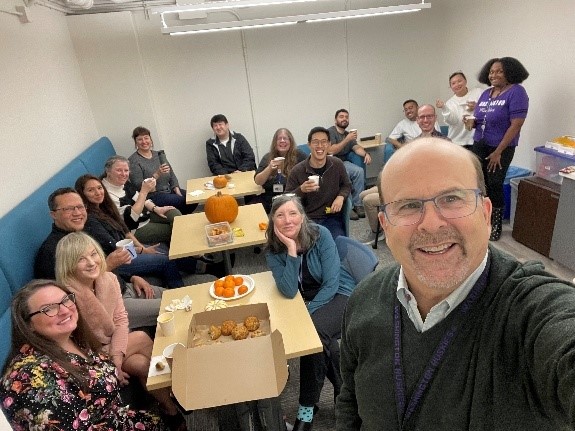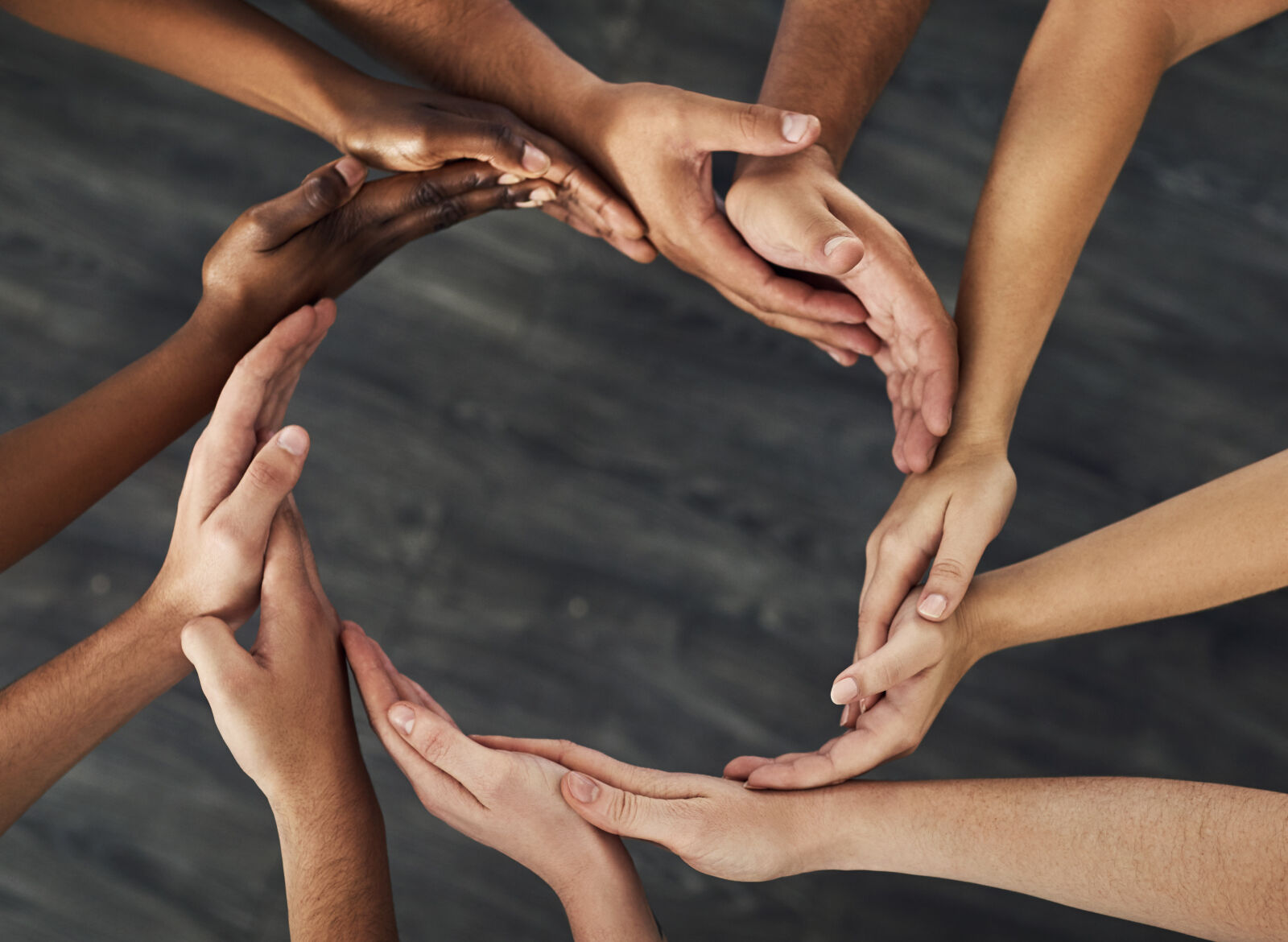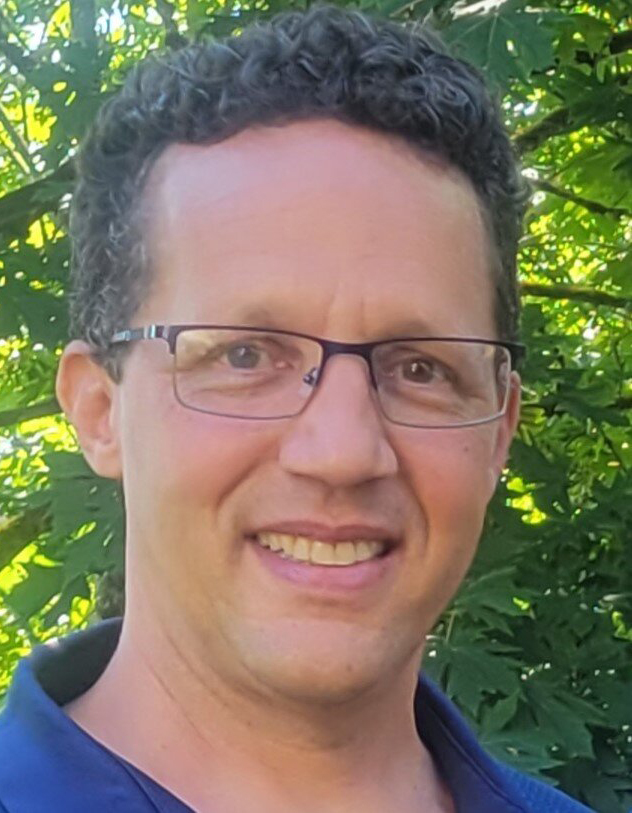

Building connection and community through deep listening
Upcoming listening circle
Join us for a virtual Department of Medicine Community Building Circle Event on Dec. 11, 3-4pm to provide a supportive space for collective coping and enhancing well-being. Please RSVP.
In the Department of Medicine, our work is guided not only by our mission, but by the culture and community that bring that mission to life. Listening circles are a unique practice that aims to strengthen our collective sense of community and ensure that every member of the department feels valued, supported, and heard.
Roots and history
The creation of the talking circle is historically credited to the Woodland tribes of the Midwest, where it was used as a form of parliamentary procedure. The circular shape itself symbolizes connection and equality, reflecting the belief that all people, and all elements of life, are interconnected.
Native American communities have used talking circles to bring people of all ages together for teaching, listening, and learning. This method of education passed on knowledge, values, and culture while instilling respect for differing viewpoints. Traditionally, a sacred totem such as an eagle feather or talking stick is passed from person to person, indicating who has the floor to speak, while the other participants listen with their hearts.

Lori Joubert, program coordinator (Cardiology) is a scholar of deep listening who has over 20 years of experience as a coach, facilitator, trainer, and Certified Listening Professional. She emphasizes that listening circles "aren’t new" but are "built on generations of a way of life for Indigenous people" and have been adapted to organizational cultures for a variety of objectives including decision-making, team building, and communication improvement.
The Department of Medicine currently has an avid ‘listening community’ consisting of Lori, Andréa Campbell, Sean Greenlee and others who bring this tradition into practice.
What are listening circles?
A listening circle is a loosely structured group process where participants take turns speaking and listening with respect, presence, and confidentiality. Unlike typical meetings focused on problem-solving or task completion, listening circles prioritize connection, empathy, and shared understanding. They offer a space for personal storytelling, emotional processing, and collective learning.
This is different than therapy in that the focus is on “the art of listening and dialogue” with the community where therapy involves a structured professional relationship where a trained mental health professional uses specific evidence-based technics to help a client heal, grow and change unhealthy patterns which goes beyond general listening in everyday life. Where the lines get blurred between listening and therapy is that whoever may benefit from being listened to will often walk away feeling better because they were heard.
Listening circles typically have a facilitator who shares group guidelines and often begins with a question (or prompt) designed to elicit meaningful reflection. Participants, in turn, speak from the heart, using "I" statements to share their own experiences and truths, while others listen without interrupting or rehearsing responses.
Listening circles can be employed in a variety of settings to build connection and trust amongst participants and foster deep understanding. Listening circles have been increasingly integrated into workplace environments as a resource for other purposes such as restorative justice and community building.
Guidelines
Lori is a member and leader within the International Listening Association (ILA). She and her ILA colleagues created the following guidelines, which Lori herself shares with the circles she facilitates.
Guidelines can vary but they focus on promoting authenticity, trust, and presence.
- Confidentiality: You get to share your own experiences, insights, thoughts, and stories. Yet, what is shared is only for the speaker to share further. What is shared in the Listening Circle, stays in the Circle.
- Speak from the heart: Like in dialogue, speak for yourself about what is true for you based on your own experiences. Use “I” sentences, avoiding, ‘they’, ‘those’, ‘we’, ‘you’, etc. Choose words that accurately communicate what you hold to be important.
- Listen from the heart: Judging and making assumptions about other people or situations can keep us from really listening effectively…which might be important and helpful. In the Circle remain open and curious to discover new ideas, surprising connections, and effective solutions, together.
- No need to rehearse: Speak spontaneously. When we catch ourselves rehearsing (everyone does) we are not listening, so gently bring your attention back to the person who is speaking. You will have time to pause before you speak and to notice what wants to be said at this time.
- Lean expression: Say just enough. Keep in mind the limits of time so everyone gets an equal chance to speak. Expressing ourselves carefully and with fewer words than normal will often let our words have more impact. One possible question that helps to process: “Does what I have to say help the circle dialogue move forward?”. And we communicate accordingly to the answer that arises.
Protocol
In-person circles
- Participants sit in a circle, share guidelines and often begin with a mindfulness moment
- A listening object (e.g., a stone or talking stick) symbolizes the speaker’s turn. Only the person holding the object speaks; others listen attentively.
- Participants may choose to speak or pass when the object reaches them.
- The object circulates until there is silence around the circle or agreed time expires.
- When it is your turn, pause and notice if you have something to share. You are not obligated to respond to others unless you want to.
- Questions or reflections on themes are welcomed but not required.
Virtual circles
- Similar with in-person circles, the circle begins with the sharing of guidelines and a mindfulness moment
- The facilitator calls participants’ names in a set order, often displayed in chat or on a slide.
- Each participant may speak or say “Pass” when their turn arrives.
- Rounds continue in order until no new contributions arise, or the time limit is reached.
- Participants take a moment before speaking to notice what they wish to share.
- As in-person circles, responses are optional, and cross-talk or interruptions are avoided.
In practice
Listening circles have been practiced in several areas of the department to share knowledge, promote connection and foster community.
Lori has been facilitating Listening Cafés for staff members in the Division of Cardiology since February 2022. The monthly series, hosted virtually, invites a presenter each month to share information about their work, an initiative or a project that would benefit continuous learning. The Cafes are an opportunity for staff to meet people from outside of the department or for staff who wish to practice their public speaking/facilitation skills.
Andréa Campbell, Seattle Internal Medicine Residency Program administrator, has facilitated community building circles at Intern Retreat for several years. Andréa shared in a recent circle about her experience sitting in circle with interns, how that dedicated time and experience together creates "a bond" and an "imprinting" of connection that lasts well into the future.
Benefits to communities and participants
Building trust and connection
One of the most significant benefits is the development of trust. Lori shared how colleagues feel safe to approach her with personal stories "out of the blue" because of trust established in circle.

Sean Greenlee, Program Manager for Diversity, Equity, Inclusion and Belonging, highlighted how listening circles bring people from their heads "to their hearts," revealing vulnerabilities and authenticities that deepen connections. “Each time I sit in a circle, that’s my role, is to try to nurture the community, nurture the connections, and really help for others to come out of their shell, and to share what’s in their heart,” Sean shared in a recent circle.
Promoting presence and mindfulness
Lori has shared that circles encourage participants to "be present in our bodies" and with each other, setting aside distractions and rehearsed responses. The practice of staying in the present leads to a calming, centering effect, reducing stress and "potential threat states" in participants both within and outside of the circle.

Mackenzie Keyse, Department of Medicine communications specialist, recently participated in a listening circle and shared, “It has felt really good to be in circle right now. I can bring that feeling to other settings where I can allow myself to show up, be present and feel confident that I don’t need to rehearse or overthink in order to contribute.”
Breaking down silos
Members of large organizations may often experience ‘silos’ in their workplace, the result of primarily engaging with a limited group of colleagues. Silos can arise for a variety of reasons such as physical separation or time and duty constraints. Listening circles serve as an intentional act to break down these barriers, fostering a culture that connects diverse roles and perspectives. In circle, Mackenzie described the challenges of remote work and how the circle made her feel "seen" and part of the departmental fabric.
Fostering inclusion and belonging
Andréa also noted how listening circles can be particularly impactful for those who may feel ‘othered’. Circle is a dedicated space where emotional expression is encouraged and deeper understanding of those who may differ from us can be gained.
“I think circle is also important for people who may be othered just because of the way the system is set up. I know colleagues who feel seen in this space where they feel seen nowhere else,” Andréa shared in circle. “These are many of our BIPOC folks, and I think in terms of equity and inclusive perspective - circle is powerful because people feel seen.”
Supporting emotional healing and expression
Circles provide a dedicated space for emotional sharing and collective healing. Participants may express grief or vulnerability and receive communal support. Lori reflected on recent circles where grief and tears emerged, emphasizing how holding space for such emotions is vital for connection.
Enhancing self-care and organizational well-being
The practice of heartfelt expression and deep listening contributes to individual wellness and, by extension, healthier organizations. "We often underestimate the value of things such as this to the degree at which it increases our own self-care and well-being, so that we can continue to not only do the job, but enjoy the job," Lori shared.
She further noted how essential self-care and well-being are for the ability to show up for our communities (families, friends, colleagues, patients, learners) and ourselves.
Evidence
Listening circles draw from restorative practice principles and Indigenous traditions that emphasize collective responsibility and healing. Research shows that restorative practices like listening circles enhance social-emotional skills, build empathy and reduce conflict in schools and workplaces.
Personal and interpersonal benefits of listening circles translate into more positive work environments. Participants have come away from circle reporting enhanced focus, reduced stress, higher confidence and improved job satisfaction which can translate into reduced burnout, increased employee retention, stronger communication skills and improved leadership potential.
Increased trust built among colleagues improves collaboration and teamwork and strengthens professional networks.
Listening as a shared value
At its heart, the practice of listening circles aligns with the Department of Medicine’s values of connection, compassion, respect, and collaboration. By integrating deep mindful listening and heartfelt sharing, listening circles are a vital resource for building a stronger, healthier, and more inclusive culture which in turn strengthens our capacity to deliver on our mission with empathy, excellence, and integrity.
For those interested in learning more about this, learning how to facilitate listening circles, or bringing this practice to your unit or division, please contact Sean Greenlee.